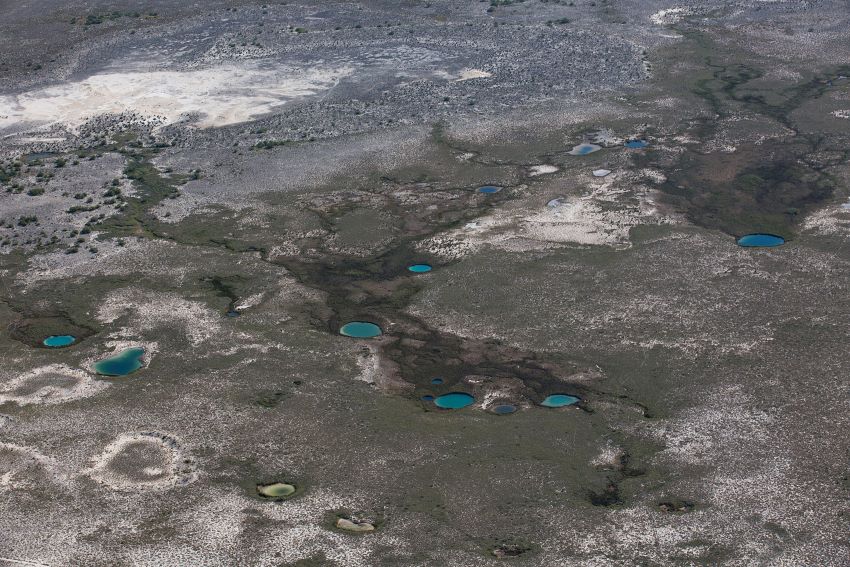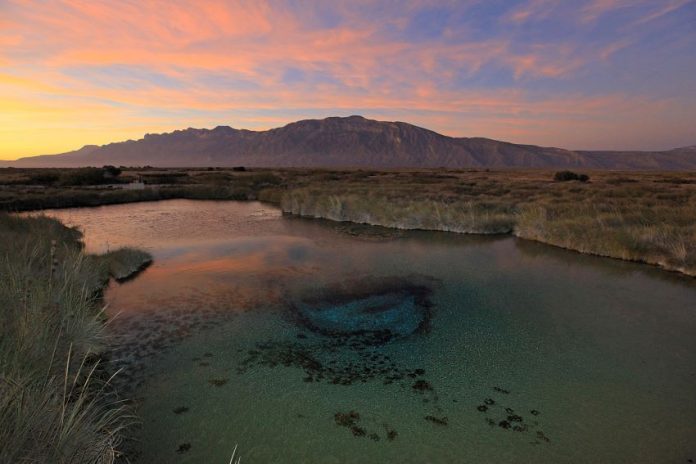This week, Mercury, Jupiter and Saturn aligned with the moon.
Images of Mars shared last week by the U.S. National Aeronautics and Space Administration (NASA) and China’s National Space Administration (CNSA) filled me with emotion, pride, and hope. They proved, once again, that there are no questions too big, nor frontiers too great for science and technology.
The colors of Mars’ landscapes and the sounds of the Martian wind make me dream of visiting that reddish-brown planet one day. It doesn’t matter to me that it is so far away, that it is desert-like, dusty, cold, and that all its volcanos have perished.
Mars’ valleys resemble seas, fluted by tiny wavelike curls. Mountain ranges and myriad craters with hallucinatory shapes. Mars is a place of dusty, gloopy, serpentine lands, its chocolate-brown dunes sculpted by fanciful winds over billions of years.
Martian winds have planetary echoes. It is a celestial body attended by two twin brother moons — Phobos and Deimos — the sons of Mars, the god of war, and Aphrodite, the goddess of love.
The Red Planet is 228 million kilometers from the sun it circles. This is more than twice the distance between our blue Earth and that star filled with hot gases that keeps our solar system bonded, its planets in tow.
Mars, the planet where a year — the time it takes to complete an orbit around the sun — lasts two earthling years. Mars, where the largest volcano of the entire solar system lies.
The sad news, at least for us, is that 96% of Mars’ atmosphere is carbon dioxide, implying that, most probably, humans will never be able to live there. Bummer.
Partly due to similarities to Mars, some regions on planet Earth have fascinated scientists for a very long time — regions such as Antarctica, Hawaii, Arizona, northern Mexico, and the Atacama Desert in Chile.
One of those places, my favorite one, is in the Chihuahuan Desert, in the mind-blowing Cuatrociénegas Valley. The Chihuahuan is North America’s largest desert, and it is also one of the most biodiverse deserts in the world — together with the Sonoran Desert in Mexico and Arizona. The Chihuahuan Desert spreads over more than 600,000 square kilometers through the states of Chihuahua, Coahuila, Nuevo León, Durango, Zacatecas, San Luis Potosí, Arizona, New Mexico and Texas. It is a desert that does not recognize the contrived, geopolitical borders created by humans.
Those NASA images of Mars brought me to Cuatrociénegas, a valley embedded in the state of Coahuila at 740 meters above sea level, between the Sierra Madre Oriental and Sierra Madre Occidental. It’s a magical spot that looks more like Mars than Earth, the place where I walked during a red sunset through white hydrated calcium sulfate plaster dunes, washed millions of years ago by the primeval Tethys Sea.

Not far away, the footprints of the women and men who walked this region more than 10,000 years ago were found some years back. Tethys, that ancient sea honoring a goddess, sister and companion of Oceanus. Together, they gave birth to countless rivers and lakes.
Silent stromatolites swarm in the hundreds of blue, Martian-like pools of Cuatrociénegas. Primitive forms of bacterial life, resembling reef-sized piles of Berber carpets, are the refugial surviving populations of one of Earth’s earliest life forms. They are the oldest fossil evidence of microbial life, possibly the first living organisms to exhale oxygen into our atmosphere.
Without stromatolites, animals, including us, might never have evolved on planet Earth. The oldest fossils of stromatolites are from 3.5 billion years ago, from Australia. When I gazed at the stromatolite-filled pools of Cuatrociénegas, it filled me with the sublime wonder of another world.
It is no coincidence that NASA found love at first sight in the Cuatrociénegas Valley. Together, a team of Mexican scientists led by Dr. Valeria Souza of Mexico’s National Autonomous University (UNAM) and NASA have studied the geology and life of this area for over two decades. It is the valley that my friend Souza describes as “an ecological time machine, a microbial oasis in the desert, the belly button of the planet, a lost world.”
Cuatrociénegas is a unique place where we can study astrobiology on Earth — that scientific discipline that investigates the origin and evolution of extraterrestrial life in the universe.
Unlike on Mars, where life as we know it seems nonexistent, in Cuatrociénegas there reigns a magnificent and unique assemblage of biological diversity. Species endemism in the 84,000 hectares comprising the Cuatrociénegas Fauna and Flora Protection Area is matched only in the Galapagos Islands.
Widespread plants include those locally known as lechuguilla, cucharilla, candelilla, siempreviva, ocotillo, sangregado, saladillo, mesquite and Mexican tea. There are also many endangered species of fauna and flora, such as the Jibali pincushion cactus, carp, perch, mojarra, softshell turtle, Mexican black-headed snake, beaver, porcupine, black bear, tlalcoyote (American badger) and the kit fox.
Currently, the Mars rover Perseverance is exploring a massive ancient lake known as Jezero, now dry as dust. And with less and less water each year, as human usage drives the water table ever lower, the aquifers that feed the pools of Cuatrociénegas also are on a dangerous course to fading away.
We know a great deal about Mars, thanks to the Martian meteorites that have landed on Earth, our telescopes and the images captured by spacecraft that have visited the planet. We know much more about the amazing Valle de Cuatrociénegas thanks to the long walks, detailed collections, experiments, studies and countless sleepless nights of scientists such as Valeria Souza.
We must conserve this lost world for ourselves, and for any fellow companions with whom we might one day be traveling through our wondrous universe.
Omar Vidal, a scientist, was a university professor in Mexico, is a former senior officer at the UN Environment Program, and former director-general of the World Wildlife Fund Mexico.
